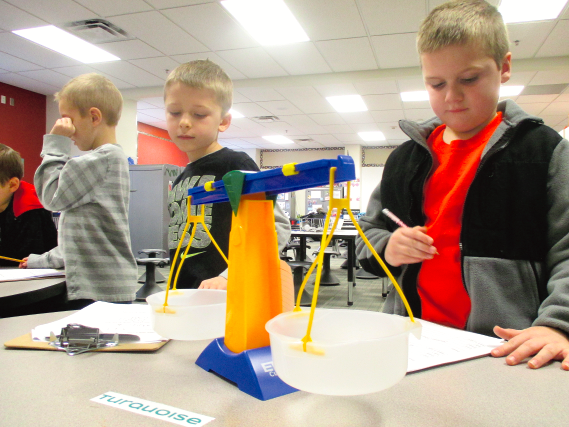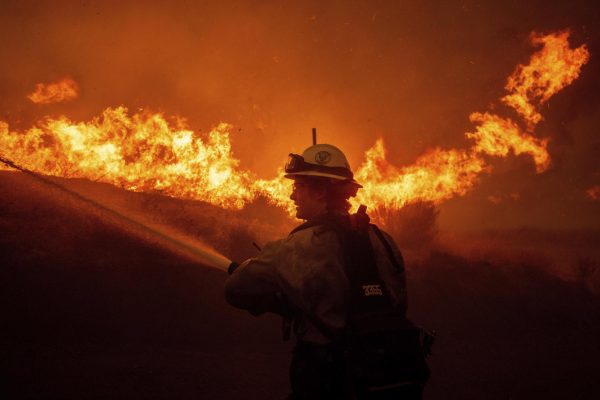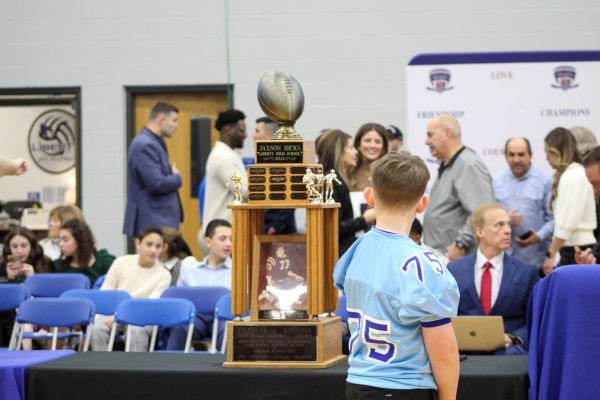Scientists in Training

Recently students visited Epic Elementary’s first grade class to teach them about science. Chemistry teacher Todd McDonald took a group of students to teach younger kids about forces, energy, temperature, mass and had a foil boat challenge. The teachers collaborated ahead of time to be sure the experiments would be fun for both age groups.
“I worked directly with the first grade teachers and their learning coach to understand what they wanted us to help first graders understand,” McDonald said. “From there, we planned activities and what would help kids investigate the concepts in a fun and interactive way”
Each station was run by high schoolers. The experiments all proved to be very hands on as well as educational.
“What I did was teach the kids about motion. I had them on a number line and they were talking about speed, direction and position by moving up and down the number line,” junior Megan Barksdale said.
One of the stations was a foil boat challenge. First graders were given aluminum foil and other simple materials to build a boat that would support the weight of a golf ball. The kids truly had fun with the engineering aspect of this station and were very creative with it all.
“We performed the foil boat challenge,” junior Blaine Rohlfs said. “Our experiment was different from the others because it focused only on buoyancy and distributing a load across a plane. I would run the foil boat challenge again because it was really fun.”
The experience proved to be entertaining regardless of the age gap between the high schoolers and first graders.
“My favorite part was getting to interact with the kids and teach them about science and see how excited they were,” Barksdale said.
Rohlfs agreed, “My favorite part about the trip was helping teach young minds how to be scientists.”
The interaction between the two different age groups was filled with a great educational value.
“Seeing the excitement of first graders learning science was my favorite part of the field trip. They are so eager to learn. I also enjoyed watching the high school students interacting with first graders. They did a great job.” McDonald said.
The trip was just as beneficial for the high schoolers who led the experiments as it was for the younger kids who performed them.
“We benefitted from the trip because it helped to develop leadership skills when instructing younger students,” Rohlfs said.
It also helped the older kids learn something new.
“I learn (or more just contented to learn) that different kids learn differently. Some of them were interested and picked it up quickly. Others didn’t really care or want to be there.”
Having different grade levels teach each other not only gives the opportunity to learn in different ways and atmospheres, but also allows students of all ages to have fun in the learning process.
“We got to expand our knowledge by teaching and also got to have fun and hang out with the first graders,” Barksdale said. “I think that it is great because the best way to learn something is to teach others. By getting to explain things to the younger kids, we are able to learn more. Also it teaches us important traits we need outside of school.”
LHS traveling to different elementary schools within our district provides a sense of unity between students of all ages. Having the older kids teach the younger ones through hands on activities gives fun memories for both groups and knowledge for future schooling.
McDonald agreed. “They love science and they love working with kids.” he said, “It was a great chance for them to help others learn. I think it is an amazing opportunity for high schoolers to help teach or mentor younger kids. It helps them communicate what they know so others can learn. It also exposes them to teaching and working with kids. Most importantly, younger kids look up to high school students. When high school students become excited about science, it inspires young learners to love science and investigation.”






